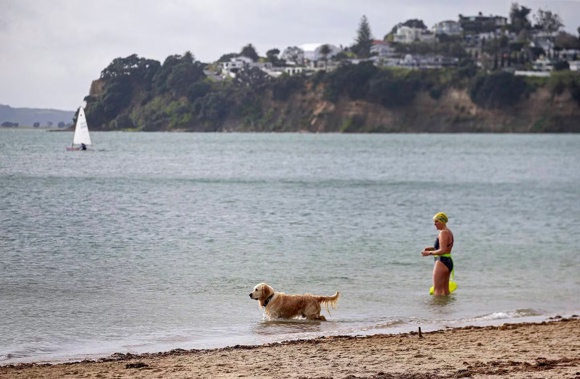
Auckland’s popular beaches are polluted with microplastics at rates at least 50 times worse than reported elsewhere in New Zealand’s coasts, researchers have discovered - posing worrying implications for marine life.
Typically invisible to the naked eye, and made up of everything from microbeads and nurdles to clothing fibres and broken-down bottles, microplastics are a macro problem.
Now one of the planet’s most pervasive pollutants, microplastics are being found in the planet’s most remote and cleanest waters - as well as in our air, rainwater and food chain.
But researchers were nonetheless taken aback when they recently sampled sites at Westhaven, Herne Bay, Okahu Bay, Kohimarama, Saint Heliers, Mission Bay and around Auckland Ferry Terminal.
/cloudfront-ap-southeast-2.images.arcpublishing.com/nzme/434JZXBB2JGNTHQ3FRZO7TPYGM.jpg)
Scientists have been taken aback at the amount of microplastics they found after sampling several popular Auckland beaches, including Mission Bay. Photo / Alex Burton
“Our results indicate that if we arranged all the pieces of detected microplastics side by side, it would result in one metre of plastic from just one kilogram of sand that we sampled – that’s astonishing,” said study author Associate Professor Lokesh Padhye, of the University of Auckland.
“Additionally, a few microplastic particles per litre of seawater may not seem that big, but when you think about the number of litres of water that the open ocean contains, the magnitude of plastic pollution becomes clearer.”
/cloudfront-ap-southeast-2.images.arcpublishing.com/nzme/YYVHMBWYGMWASIZPHTLGCC6UXE.jpg)
Typically invisible to the naked eye, microplastics are made up of everything from microbeads and nurdles to clothing fibres and broken-down bottles. Photo / 123rf
The team used sophisticated imaging techniques to identify the microplastics, many of which were widely used in packaging, coatings, footwear and textiles.
Padhye said that, once released into the ocean, microplastics could cause a host of problems for sealife, such as inflicting injuries and suffocation, or disrupting feeding patterns and species growth rates.
In the under-pressure Hauraki Gulf, studies have detected microplastics in the guts and muscle tissue of several species of caught fish – and it was recently estimated resident whales were consuming around three million of these particles each day.
“Our findings underscore the urgency of addressing microplastic pollution to safeguard marine ecosystems,” study leader and PhD student Mahyar Ghanadi said.
The study, published in the journal Science of The Total Environment, also revealed a ten-fold increase in the concentration of microplastics around stormwater outlets.
“Stormwater drains on streets, sidewalks and other surfaces may serve as conduits for microplastics, contributing to higher contamination levels in coastal areas,” Padhye said.
One positive take-away, however, was a reduced presence of polythene – something that could owe to the phase-out of single use plastic shopping bags in 2019.
“This provides optimism about the effectiveness of environmentally friendly policy shifts in tackling such global challenges,” Padhye said.
Jamie Morton is a specialist in science and environmental reporting. He joined the Herald in 2011 and writes about everything from conservation and climate change to natural hazards and new technology.
Take your Radio, Podcasts and Music with you









